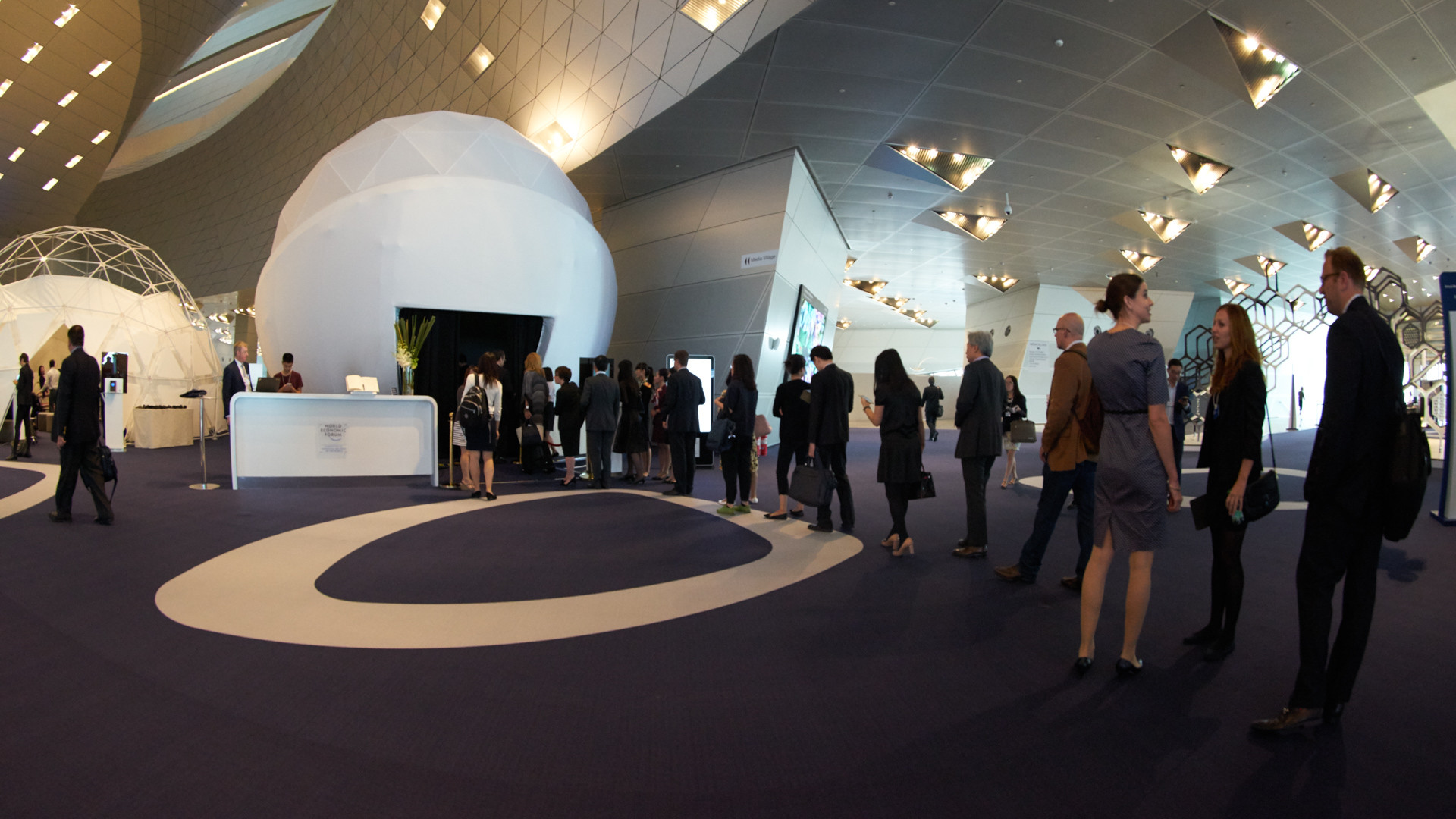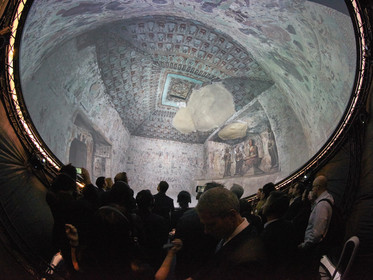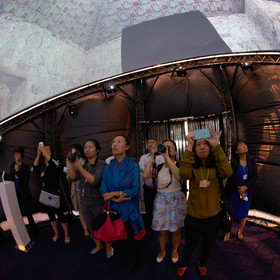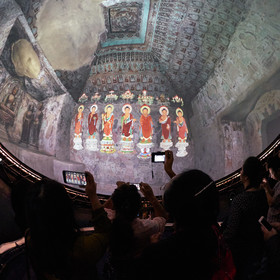The Cave Dome is the fourth in a series of virtual and augmented reality installations that explore sensorial and experiential exhibition technologies and 3D imaging data. The Pure Land projects are based on the UNESCO World Heritage site, the Mogao Grottoes, Gansu Province, northwestern China. The research and immersive applications developed are focused on Cave 220, known for the importance of its early Tang murals.
The peerless treasuries of paintings and sculptures at Dunhuang are extremely vulnerable and many caves are closed to public, including Cave 220. Comprehensive digitization including laser scanning and ultra high-resolution camera array photography are now undertaken by the Dunhuang Academy as a primary method of preservation and interpretation for the site.
The digital facsimiles of this paragon of Chinese Buddhist art can be transformed, providing formative personal experiences for museum visitors. The Pure Land projects contribute to new strategies for rendering this cultural heritage landscapes, redefining futures for digital preservation, cultural heritage interpretation, and embodied museography.
Cave Dome takes advantage of the hemispherical curvature of a fulldome projection system to interactively re-present the 'pyramidal' Cave 220 allowing fully navigable experiences of being inside the cave at 1:1 scale.
EXHIBITION RECORD
2015/09/09 - 11/09 : The World Economic Forum’s The ninth Annual Meeting of the New Champions (AMNC) 2015, Dalian, China



